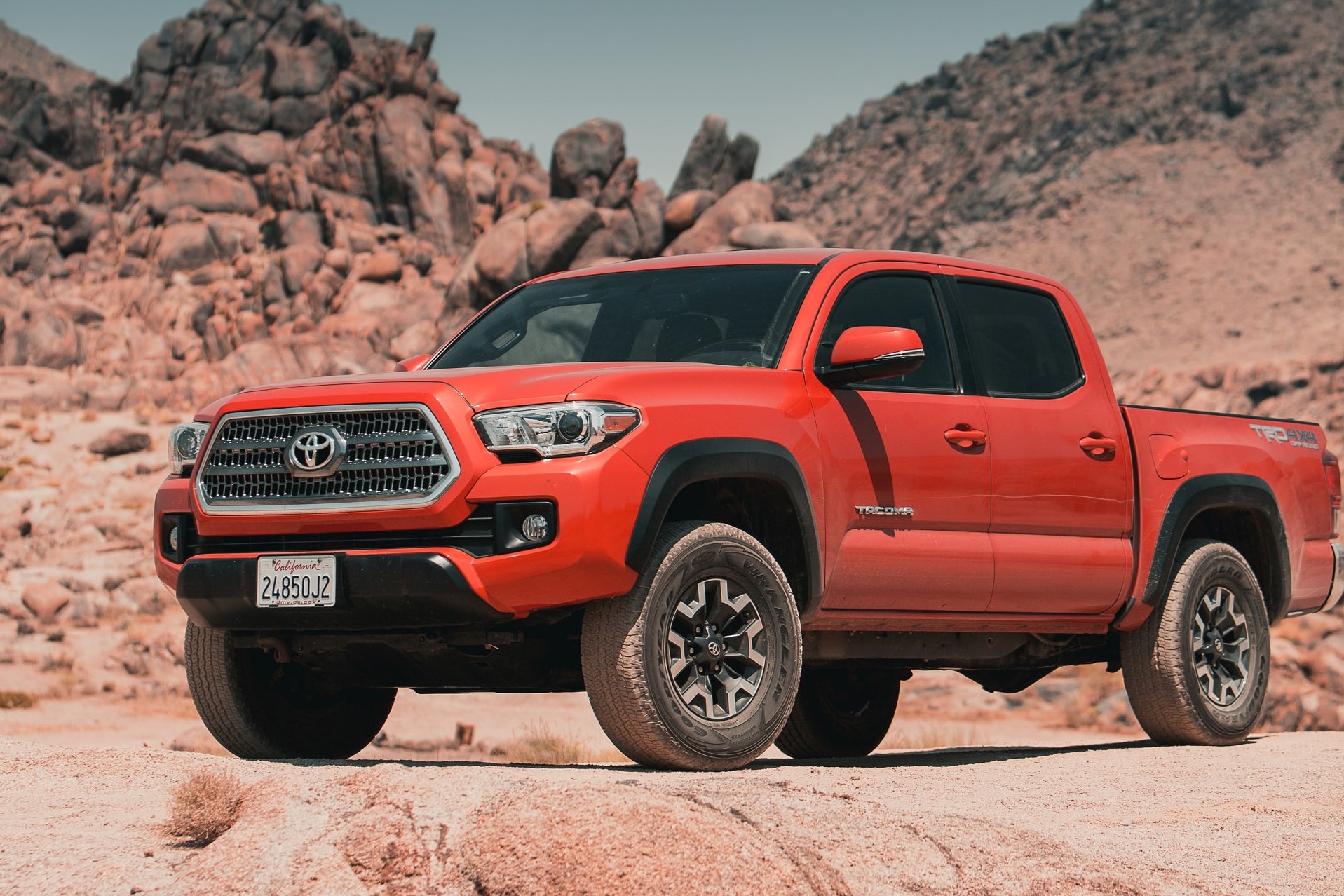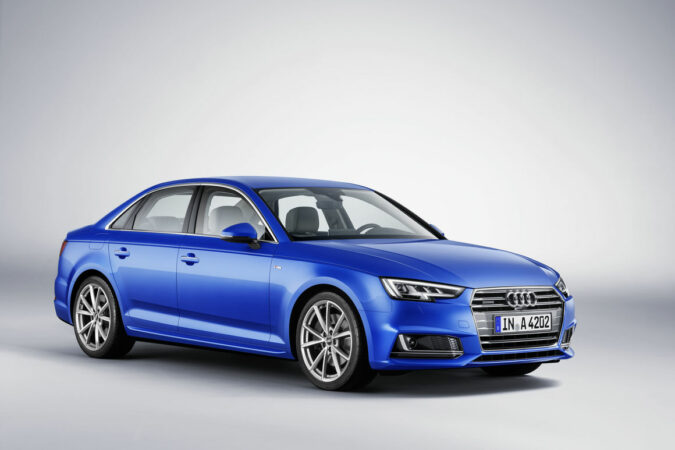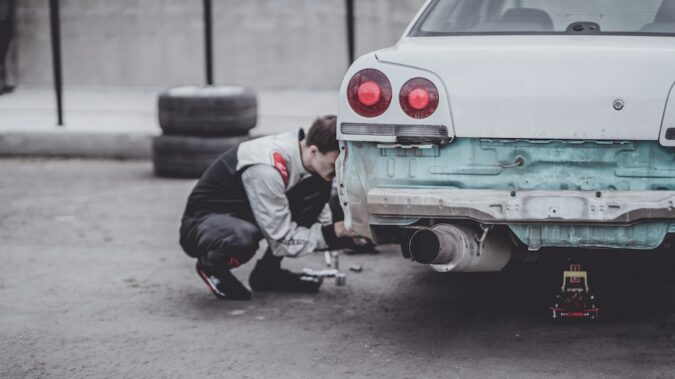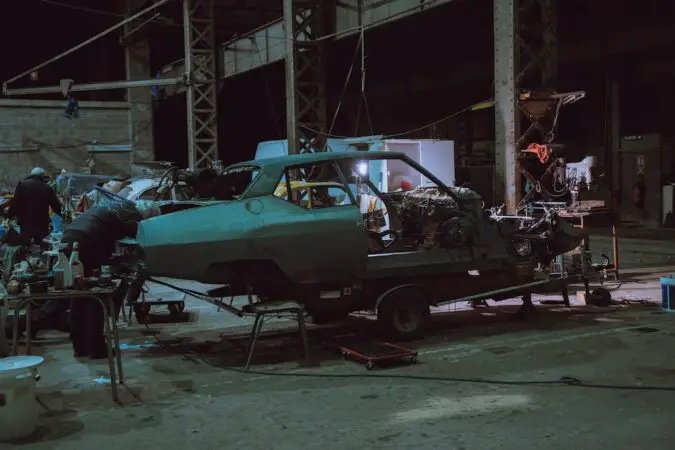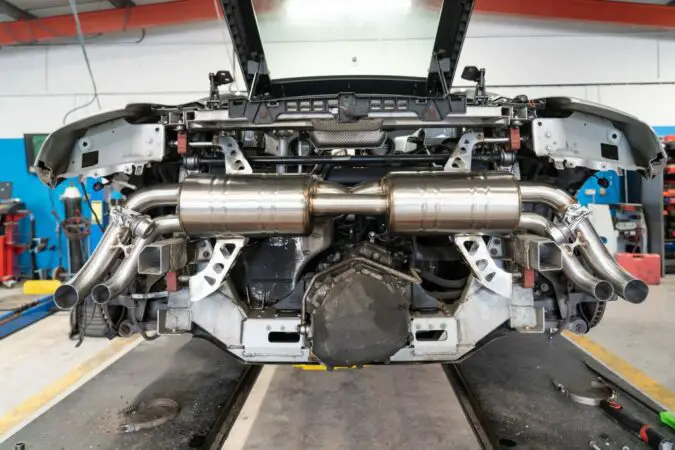In a utopian society, we could freely drive the streets without worrying about collisions. Sadly, wrecks are a part of being on the roads, and they happen more frequently than we would like. When our vehicle is in such a collision, it often bears the signs of our bad luck. A car frame can be considered the skeletons of a vehicle. They are the backbone, keeping all other components in place.
For the luckiest ones, a small fender bender will issue some cosmetic defects – something that can be repaired fairly easily. It might be as simple as repainting a bumper or pulling a dent out.
In contrast, the worst the collisions leave behind significant cosmetic and mechanical damages. Often, car owners have to shell out thousands of dollars to get those fixed. Not to mention it severely depreciates your car.
Car owners have to deal with a variety of car damages throughout their time with the car, but none is as major as car frame damage. If a car sustains frame damage, the vehicle has a higher chance of getting totaled. Thus, we start wondering how a car can get damaged that badly.
Keep reading to learn more about the severity of car frame damage as well as general costs associated with fixing such a problem.
What Is A Car Frame?
A car frame is to a car as a foundation is to a building. It serves as the primary building block for any vehicle. A “frame” typically comprises two rails, which extend the whole length of the car and are connected by multiple cross members at different intervals.
The specific design of the frame often differs between makes and models of the vehicle but all of them serve the same cause. From the body to its powertrain, all components of a car are joined at this main framework within the build.
Specialty body mounts mount the vehicle’s body to the frame below. Both the transmission and the engine are held in place by specific frame-supported clips. In summary, a car wouldn’t exist without a properly designed frame.
Vehicle frames are developed to integrate certain angles, which finally impact characteristics like front-end geometry and driveline inclination. The slightest change in such angles can cause several drivability issues.
Introduction To Unibody Frames
As the name suggests, a unibody frame has the car’s body, floor plan, and chassis forming one structure. This sort of frame reduces weight but it also improves fuel economy. Moreover, it enhances ride quality and offers better handling. Due to these benefits, a unibody frame is the most used form of construction method for passenger vehicles.
Body-on-frame is the other kind. Also known as ladder frame, this variation of car frame was the norm in the past, but they have been limited to use in large SUVs and trucks for their greater resistance and strength. We will briefly discuss body-on-frame and unibody design in a future segment.
Unibody frames can be divided into a few parts. Let’s talk about those now.
1. Unirail
The uni rail is 2 symmetrical beams positioned on the rear and front of the vehicle. Thanks to their strength, the uni rail serves as the base for the rest of the frame parts.
2. Core/Radiator Support
Also termed radiator support, core support is a metal frame surrounding the radiator, holding it securely in place. The part is mostly bolted on, meaning it can sustain wear and tear and can be replaced easily.
3. Strut Tower/Apron Assembly
Vehicles have rear aprons and front aprons. These are essentially frames that keep the struts in position. A strut tower is a unit of the apron and it helps resist chassis flex when cornering.
4. Floor Pan
A floor plan is simply a metal sheet welded to multiple cross members, making the vehicle’s floor. There are numerous grooves and holes in it to accommodate electrical wiring and drivetrain components.
5. Firewall
A firewall separates the passenger cabin and engine bay. This frame component generally consists of a sheet made from pressed 14- to 18-gauge steel clad with a sound-deadening material layer.
6. A/B/C Pillars
As the name suggests, the pillars are the car’s vertical support systems. The letter “A” means the pillar is closest to the front, the middle one is “B,” and the one on the rear is “C.” An extra pillar “D” exists on some large vehicles like SUVs and minivans.
7. Quarter Panel
Essentially, a quarter panel forms the car bed frame and is made from steel metal. They consist of an area by the rear tires and the gas cap. Although they are typically made of metals, quarter panels can also be made of fiberglass or carbon fiber in some vehicles to help decrease weight.
8. Rocker Panel
A rocker panel comprises the area between the rear and front tires, under the doors. Their job is to support the doors, making sure they stay aligned upon closure.
9. Rear Support
The car plate frame, including the pair of unirails, back bumper support, and the floorboards make up the rear support.
Now that you have some form of knowledge about the components of a unibody car frame, we will look at the other kind – body-on-frame.
Body-On-Frame Vs Unibody
A body-on-frame design has two sections; the chassis and the body. The design remains the original one designed for American cars, dating back to the first cars manufactured on assembly lines.
As body-on-frame vehicles had two parts, it was cheaper to repair them and can work on off-road terrain comfortably. Furthermore, body-on-frame vehicles can tow heavier loads thanks to their sturdier foundation.
By comparison, the body and chassis of a unibody foundation are made as one unit. These designs were introduced to the US market in the ‘30s and quickly rose to fame due to their lighter design, greater safety ratings, and construction efficiency.
Since body-on-frame designs are heavier than unibody frames, the latter offers better drivability and fuel economy.
The single-unit design implies the automaker can add “crumple zones” to the frame.
What Is A Crumple Zone?
Crumple zones are indented sections in a frame that form a light, wavy design. Generally found in the rear support and front engine bay of the car, these sections are designed to absorb the kinetic energy of an impact. In event of a collision, the crumple zone will literally “crumple,” or fold to do so. This results in fewer fatalities and injuries if there is a collision.
To learn more, check out this video.
The majority of modern-day vehicles feature a unibody frame, but heavy-duty vehicles or the cars made before the 2000s may come with a body-on-frame foundation instead. What vehicle frame is best for you will depend on what you want from the frame.
A unibody frame design is the best choice if you desire higher fuel economy and safety. However, if you want a tougher vehicle with cheaper repairs, a body-on-frame build will be best.
Body-On-Frame Pros And Cons
While body-on-frame cars are gradually being phased out in favor of unibody models, there are quite a few advantages to their two-part architecture. The most obvious advantage is its off-road prowess. Body-on-frame designs, since they are made up of two pieces, may endure the twisting pressures of uneven or off-road terrain better than their unibody counterparts.
Furthermore, they are frequently mounted higher, making it simpler to go across particular terrain while avoiding mud, dirt, and snow. Body-on-frame designs are great at towing large payloads or trailer capacities due to their strong foundations. Lastly, body-on-frame systems are usually less expensive to maintain.
As the chassis and body are separate, you can change just the damaged one, as opposed to repairing or replacing the entire frame on unibodies.
Despite all of their advantages, there are certain disadvantages to consider when selecting a body-on-frame model. These cars are typically relatively heavy, which reduces fuel efficiency ratings. Because of their larger height, high centers of gravity, and strong torsion flexing, they are more susceptible to rollovers.
One notable disadvantage of body-on-frame systems is their lack of safety ratings. The answer to the question of whether a body-on-frame construction is safer than its unibody counterpart is no.
There is no crumple zone on body-on-frame, which can result in serious injuries and even death in a crash.
Unibody Frame Pros & Cons
On top of offering greater fuel efficiency thanks to their lighter builds, unibody frames boast a higher safety rating. Their crumple zones prevent mass destruction of the car frame upon crash, so the passengers and driver remain unscathed.
Moreover, unibody designs are cheaper to make, which increases savings for the average consumer. Unibody frames are easier to handle and have a lower center of gravity. Despite all the benefits they offer, unibody frames are far from perfect. The single-unit design becomes a double-edged sword when the driver tries to go off-road or tow. The biggest disadvantage, however, is the repair cost.
If any component of the unibody design sustains damages, the whole frame suffers the consequences. This can increase repair costs and there is a chance your vehicle might be totaled and written off instead of fixed.
Differences Between Frame And Chassis
A car’s chassis and frame are both key elements of its composition. They are units of the body structure of any vehicle and keep it informed when it moves or remains stationary. Most people struggle to tell the difference between a car chassis and a car body. The main differences between the two are listed below:
Meaning Of Chassis And Frame
A chassis can be deemed a vehicle’s skeletal frame on which the majority of mechanical bits like steering, tires, brakes, engine, and axle assemblies are attached. It is the most important part of a vehicle since it provides stability and strength throughout the vehicle under any circumstances.
On the other hand, a vehicle frame is the chassis’ main structure. The chassis along with all other parts are connected to the frame.
Design Of Chassis Vs. Frame
A chassis is developed as the bare minimum for any car to move whereas a frame is essentially the body of the vehicle where everything else is placed.
Signs Of Car Frame Damage
Are you considering buying a used car? Make sure to look out for the tell-tale indications of car frame damage. A car with a bent frame is severely depreciated both in value and service life.
1. Non-Uniform Bent Frame On Car
If a bend in a frame rail is not the same as that on the opposite side, you can suspect frame damage. Mostly, the produced bends are identical and uniform. You should be able to tell the stark difference simply by looking at them.
2. Drastically Changed Alignment
The front end of a vehicle can get misaligned for a variety of reasons. Drastic misalignment, however, is one factor to look out for. If you can see it with the naked eye, that is a dead giveaway of damage to the car frame. Do not fall for the seller claiming that this is repairable with just a quick alignment.
3. Abnormally Placed Suspension Components
Take a quick look inside the wheel well of the vehicle. Notice any strut or shock canted at an abnormal angle and whether it is the same as the one on the other end. If not, know that the car is suffering from frame damage.
Misaligned or oddly placed struts/shocks serve as a sign that significant frame damage changed the position of the suspension mounting points within a vehicle.
4. Ill-Fitting Components
There is a significant possibility that considerable frame damage is the culprit if a lot of a car’s body panels and related components feature a poor fit and finish. Even a door that won’t close correctly might be an indication that car frame damage is tampering with the vehicle’s performance.
This is particularly true if all of the components and panels seem to bind weirdly when moving despite being new. In many cases, the frame of the car is destroyed to the extent of changing the position of its body mounts.
5. Premature Tire Wear
Worn-out tires can be the result of a variety of issues. However, if the tires display different kinds of wear and tear, there is a high chance that the reason is car frame damage. A-frame that has been damaged to the extent of changing its geometry will force the tires to track unevenly when moving down the street. More often than not, this leads to weird tread wear.
6. Twisted/Sagging Frame
If the frame is twisted or sagging, it will likely leave gaps between the various body panels. Do not ignore this as continued sagging can lead to accelerated wear of suspension parts and tires.
7. Mashed Frame
Perhaps the most common symptom of car frame damage is a mashed frame a condition where the frame crumples completely. Look for wrinkles or distortions in the body panels, such as the fenders, side rails, or hood.
8. Sway Damage
This kind of damage generally happens if a car crashes against something in a corner. Sway damage causes an interesting issue for the vehicle where you will not be able to steer the car in a straight line. If you keep driving in this state without getting the problem repaired, there is a good chance the transmission will react by breaking down.
Can Frame Repair
This depends on how much damage has been done to the car frame. In specific cases where the damage is done is comparatively minor, the frame can be fixed.
In other more serious cases, however, car frame damage is irreparable. Frame damage so severe it calls for hours of work, money, and effort, is not always doable; not to mention mechanics might not want to take up this work at all.
Chances are, you will have to spend more money to get the frame repairs than you had to spend to buy the vehicle in the first place. Plus, a previously fixed frame is not going to be as strong as its original condition. This is why repairing a frame with immense damage is a huge liability.
Some auto shops will directly reject the idea of repairing damaged frames – ones that are excessively distorted or tweaked.
Car Frame Repair Cost
How much it will cost for you to get car frame damage repaired depends on several factors. For the most part, it is largely dependent on the intensity of the damage.
Almost always, the car will be positioned on top of a specialized tool called a “frame rack” where the precise repairs are done. Naturally, services like this aren’t cheap or easy to do.
This estimate does not count the price of repairing extra cosmetic damage your vehicle incurs during a collision.
The expense of fixing a badly twisted or broken frame is at the opposite end of this pricing range. Before the repair of external aesthetic components, it is not unusual for this sort of repair to cost more than $10,000.
Few automobiles receive such comprehensive repairs since it is rarely practical.
Is It Safe To Drive A Vehicle With Frame Damage?
In one word, no; driving a vehicle with frame damage is not safe. When damage of this sort happens, the structural integrity of the car is compromised. The result? Any subsequent crash could lead the car tumbling toward dire consequences. Moreover, as car frame damage often changes the front-end geometry of the vehicle, the drivability takes a hit.
It’s normal to experience unbalanced steering couples with uneven weight distribution, two symptoms that increase the risks of horrible damage in a wreck. If you do not think this is bad yet, understand how you may be held liable if you injured another person due to your poor choices. Why jeopardize the lives of people around you by driving a vehicle with frame damage?
Can You Sell A Car With Frame Damage?
The validity of selling a car with a damaged frame varies by state. However, in virtually every case, a reseller is legally bound to reveal facts about such damage before the sale. Failure to provide this information might soon place you in legal trouble.
Moreover, failing to disclose car frame damage when trying to sell a vehicle can land you in both criminal and civil problems if the car’s new owner is hurt in an accident caused by such damage.
So, presenting prospective purchasers with a proper analysis of any apparent frame damage is the best way to continue; not to mention the only way.
Vehicle Frame and Chassis Facts:
- A vehicle’s frame and chassis are essential components that keep the vehicle in form either when stationary or moving.
- A vehicle frame is the key part of a car and serves to support the weight of the vehicle passengers, cargo loads, and the vehicle’s body.
- A chassis accommodates all the other components of the vehicle and supports all the other parts and components of the vehicle.
- The functions of a vehicle chassis include supporting the steering system, fuel tank, radiator, engine, suspension system, brakes, wheels, and transmission system.
- The functions of a vehicle frame include supporting the vehicle’s body and mechanical components and dealing with dynamic and static loads without undue distortion or deflection.
- The types of vehicle frames available depend on the construction and include perimeter frame, ladder-type frame, off-set frame, X-type frame, and off-set with cross member frame.
- The different types of car chassis include ladder, monocoque, backbone, space, or tubular chassis, and combined chassis.
- The design of a chassis is the minimum requirement for any vehicle to move, while a frame is the vehicle’s body as everything else is fitted on it.
- A chassis is regarded as the backbone of a vehicle as it supports all the other parts and components of the vehicle.
- Understanding the differences between a frame and a chassis is essential as they are designed differently, have different components, and serve varied purposes needed by the vehicle for stability and strength while moving or static.
Bottom Line
Car frame damage can mean negative repercussions for your vehicle and your health. There is no reason to delay such an important repair, especially if you plan on selling the car one day. Although the repair tends to be on the expensive side, it’s best to have these concerns mitigated as soon as possible.
Frequently Asked Questions (FAQs)
Here are some popular FAQs:
What Is Frame Damage On A Car
Frame damage refers to damage sustained on any components of the vehicle considered to maintain structural integrity. Damage like this is generally done by outside forces, like disrepair and collision.
What Is Considered Frame Damage On A Car
We can say the frame of a car is damaged if the unibody is majorly compromised, making the vehicle unbalanced and consequently causing more components to break and fail.
What Is The Frame Of A Car
The car’s frame is its primary supporting structure to which all other parts of the vehicle are attached.
How Likely Is A Car Totaled If The Frame Is Bent
If it costs more to fix the frame damage than to change the vehicle, we call the car totaled.
How To Remove Rust From Car Frame
Rusted car frame can be fixed by anyone with the right knowledge and tools. Refer to this guide to learn how to clear rust on car frames on a budget!
How To Fix A Bent Car Frame
Interestingly, the bend on a car frame can be fixed using the vehicle’s mass and torque. Check out this guide to learn how.
How Much Does It Cost To Get Car Frame Paint
For a simple powder coating job, it will cost $350 to $550.

